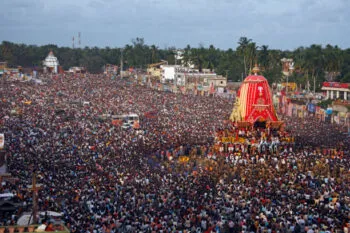
In the previous post, we delved into the origins of the Puri Temple and saw how the three presiding deities—Lord Jagannath, Lord Balaram and Devi Subhadra—came to be.
Today, we shall know why Ratha Yatra is observed and how the whole festival is organized. There are socio-religious as well as mythical roots of the origins of the Ratha Yatra. We can find descriptions of Ratha Yatra’s significance in Brahma Puran, Padma Puran, Skanda Puran and Kapil Samhita. Historically speaking, the Chariot Festival dates back to at least 12th century CE. It all started in the reign of King Indradyumna. Over the centuries, this festival assimilated elements of local tradition and beliefs. But despite that, the Ratha Yatra is equally celebrated by all the major sects of Hinduism. Though majorly a Vaishnava festival, the deities themselves incorporate Shaiva, Shakta, Tantrik and even Buddhist overtones.
Jagannath Puri Temple is one of the four major pilgrimage sites, sacred to the Vaishnava tradition, with Badrinath in Uttarakhand, Dwarka in Gujarat and Rameshwaram in Tamil Nadu being the other three. But Puri Temple has its own mysteries and mix of fascinating stories which makes it a unique place.
Why Is Ratha Yatra Observed?
There are many beliefs associated with the origins of the festival. One story belies—Kansa, the evil maternal uncle of Krishna, invited Krishna to Mathura. Akrur came to take Krishna and Balaram from Vrindavan. They left Vrindavan on chariots. Many celebrate that day of Krishna and Balaram’s departure as the Ratha Yatra.
Another story is that after Krishna killed Kansa, they moved in their vijay rath (victory chariot). That’s why many celebrate Ratha Yatra to commemorate that day.
There’s also this belief that once Krishna gave Subhadra a ride on a chariot to show her the glory of Dwarka nagari. The people of Dwarka observe this as Ratha Yatra.
But the most famous story is that when Krishna finally departed his mortal body in Dwarka, Balaram was so heartbroken that he rushed to drown himself with Krishna’s ashes. At the same time, on the opposite end of the geography, in Oddisha’s Puri (called Malab back then), King Indradyumna dreamt that Krishna’s remains would come floating on the sea beach; that he must build a temple making statues of those remains.
We discussed this story in the last post.
The whole Ratha Yatra is also a symbolic journey of Lord Krishna—a journey of devotion, of union with the devotees. We shall see how this is so in the next part.
How is Ratha Yatra Observed?
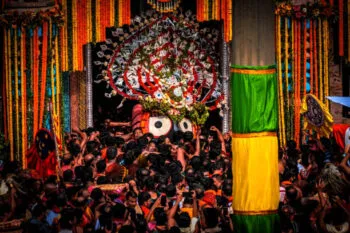 (Photo by STR/NurPhoto via Getty Images)
(Photo by STR/NurPhoto via Getty Images)The Ratha Yatra Utsab starts with the construction of the three huge chariots of Lord Jagannath, Lord Balabhadra and Devi Subhadra. This starts on the Akshaya Tritiya of Vaisakh. The construction work goes on in front of the palace of the serving king of Puri.
The festival formally starts with the Candan Yatra, the sandalwood ceremony. It goes on for three weeks. The deities are taken out of their garbha-griha in colourful processions and given ceremonial boat rides in Narendra Pokhari every day. They are adorned with sandalwood-paste, scents…
This culminates in the Snan Yatra or the Bathing Ceremony, which takes place on the Jyeshtha full-moon day. In this, the deities are taken out from their sanctum sanctorum and placed on a large platform to bathe them with 108 pots of water. It is believed that after this, Lord Jagannath gets fever and that’s why for the next twelve days or so, they don’t come out from their garbha-grihas. During this time, Lord Jagannath, with His brother and sister, remains hidden from the public eye. Only the chief daitapatis or daitas who have the exclusive rights to serve the Lord are engaged in the Lord’s seva.
And finally on the Shukla Dwitiya of Ashadh, the Lord comes out to give darshan to His devotees. The deities are taken to the chariots in grand processions, called pahandi. They begin their journey to the Gundicha Temple, which is supposed to be their maternal aunt’s home, locally called Masir Bari. Gundicha was also the name of King Indradyumna’s wife.
The chariot of Lord Balaram, known as Taladhwaj and Haladhwaj, goes in front. His chariot has fourteen wheels and they represent the fourteen worlds described in our scriptures. Lord Balaram is representative of the guru-tattwa. In the middle runs Devi Subhadra’s chariot, known as darpa-dalan and Padmadhwaj. Her chariot has twelve wheels and represents the twelve months. She symbolises the bhakti-tattwa. One must do bhakti all the time. Lord Jagannath’s chariot, Nandighosh, comes last. It has sixteen wheels and represents the highest being who is complete like the sixteen kalas (arts). He is the para-tattwa, the ultimate divinity. There are spiritual as well as symbolic reasons as to why the chariots move in that order. We shall try to go into those aspects in the next part.
After reaching the Gundicha Temple, which is almost three kilometers in distance from the main temple, the deities stay there for seven days, and on the eighth day, on Shukla Dashami, they start their return journey. Before entering the garbha-griha again, they are given suna besha (golden makeover) and Adharpana ritual is carried out.
There is a cute story here. Lord Jagannath, who is none other than Lord Vishnu, went out to visit their Masir Bari without informing Mata Lakshmi. So, when they came back, Mata Lakshmi was in abhiman. She allowed Balaram and Subhadra to enter the temple but closed the doors for the Lord. To please Mata Lakshmi, Lord Jagannath gifted Her rasgullas, and She was smiling again. That’s how the Lord pleased Mata Lakshmi. That’s why on this day, that is, on their day of return, the pandas and devotees distribute rasgullas to everyone. It is believed that the Lord loves to eat and also loves to feed others. More on Lord’s eating stories maybe in some other post.
That’s how the entire Ratha Yatra Utsab is observed. Millions of devotees come to Puri to have a glimpse of the Lord. It is believed that pulling the ropes of the chariots grants one liberation. That’s why thousands go there to touch the rope at least once. It is considered as, or perhaps more, sacred as bathing in River Ganga.
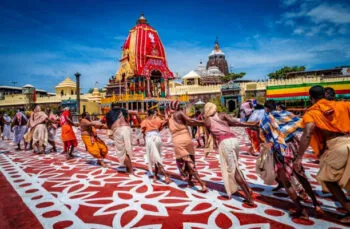 (Photo by STR/NurPhoto via Getty Images)
(Photo by STR/NurPhoto via Getty Images)That’s all for today. Stay tuned for more stories on Lord Jagannath.
Jai Jagannath!
Jagannathswami nayana-patha gami bhaba tume ||
—
Thank you for your attention.
Feature Image Credit: https://www.dreamstime.com/stock-photo-lord-jagannath-jagannatha-meaning-universe-deity-worshipped-primarily-hindu-people-mainly-indian-states-image73798812

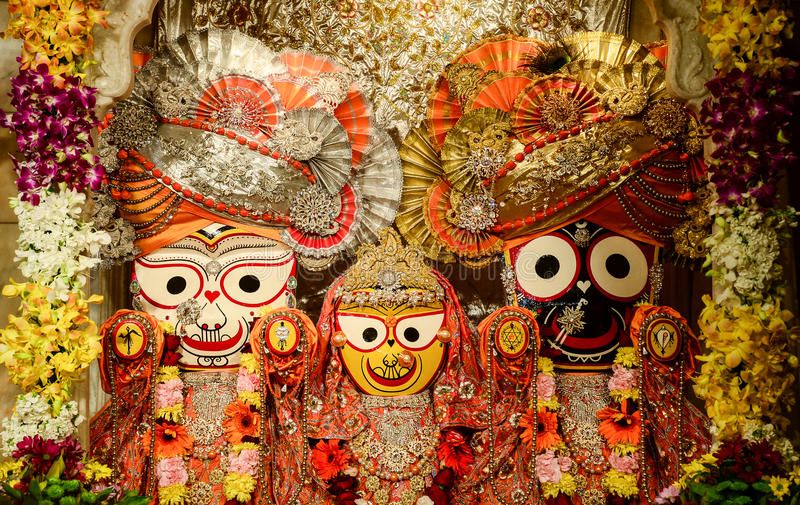

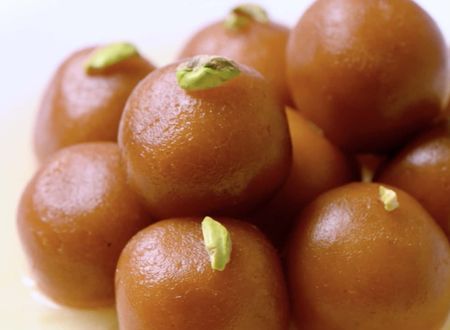
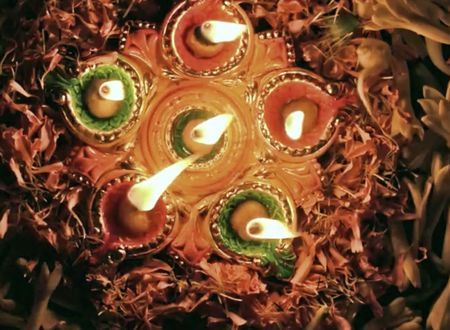
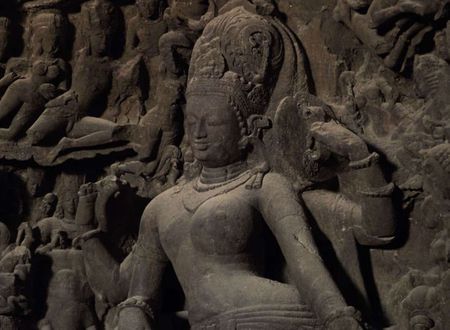



Comments & Discussion
9 COMMENTS
Please login to read members' comments and participate in the discussion.